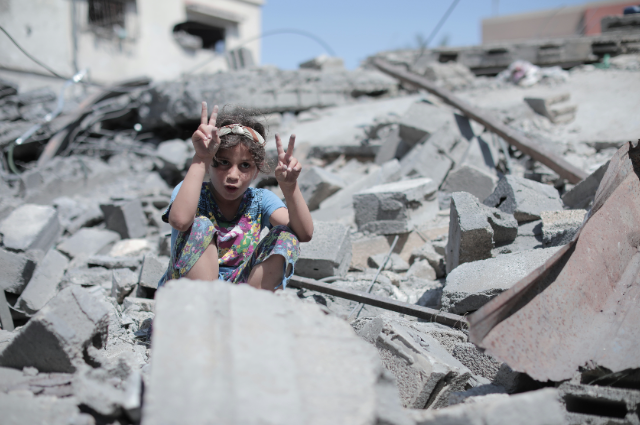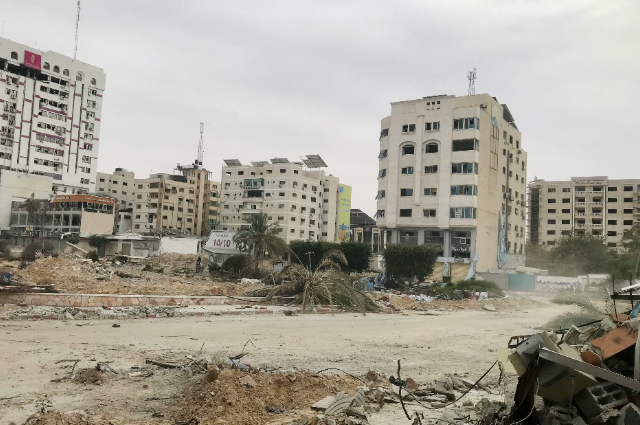
Introduction
The politics of defence cannot be understated, particularly in the case of Iran as it faces heightened tensions with Israel. Iran’s opposition to Zionist expansion, with explicit American support, confronts international laws and challenges Iran’s historic restraint. The Islamic Republic’s foreign policy, founded on anti-Israeli sentiment since the 1979 Revolution, has shaped the nation’s identity on the world stage. Iranian leaders, from Ayatollah Khamenei to former President Mahmoud Ahmadinejad, have vocally condemned Zionism; Ahmadinejad’s speeches at the United Nations, in which he controversially labelled Israel as a “cancerous tumour,” remain emblematic of this stance. Recent events, notably Ayatollah Khamenei’s endorsement of Hamas's counterattacks, have underscored Iran’s readiness to defend its regional interests through direct or proxy engagements.
Iran’s recent engagements reflect a series of symbolic but pointed responses. Alleged Israeli attacks on Iranian-affiliated sites and the assassinations of prominent figures, including Hezbollah's Hassan Nasrallah, have propelled Iran’s defence posture. Yet the question remains: do these escalations bolster Iran’s image as a steadfast regional power, or do they invite further bloodshed in a region already embattled by sectarian and political divides?
Drivers of Iranian Aggression
Iran’s willingness to escalate tensions with Israel is rooted in several significant events that have targeted its sovereignty and alliances. In April, Israel allegedly attacked the Iranian consulate in Damascus—a move Tehran interpreted as an affront to its national integrity rather than a mere incident on Syrian soil. In diplomatic terms, striking an embassy or consulate is considered an attack on the country itself. While Iran’s initial response was limited to symbolic missile strikes, it underscored a clear message: any provocation, however slight, would not go unanswered.
Adding to Iran’s strategic calculus are the assassinations of key figures aligned with its anti-Zionist stance. Among these was Ismail Haniyeh, a top Hamas official, who was reportedly killed within a high-security area in Tehran under circumstances that suggest foul play. Reports claim that Mossad orchestrated the attack with the aid of domestic traitors within Iran. For Iran’s Shia leadership, this assassination signified a significant breach, stirring public and military sentiments to act against both internal dissenters and the state of Israel itself.
The recent assassination of Hezbollah’s Hassan Nasrallah in Beirut, another influential figure in regional Shia movements, further stoked Iran’s resolve. Nasrallah had long represented Hezbollah’s ideological and military resistance against Israeli incursions. To Iran, his loss is akin to an assault on Ayatollah Khamenei himself, threatening the perception of Iran’s military and intelligence prowess in the eyes of allied factions such as Hezbollah. Inaction, Iran fears, would project weakness and prompt loyalist groups to reconsider their faith in Tehran’s influence.
October Escalation and Technological Shift
Iran’s latest offensive, coined True Promise 2, demonstrates a marked evolution in its military strategy, utilizing advanced hypersonic missiles with increased precision. In comparison to the April strike (True Promise 1), which relied on conventional drones and missiles, this recent attack has yielded notable results: out of 200 missiles launched, 90 percent reportedly hit specified targets within Israeli territory, notably striking populated areas in Tel Aviv and rendering Israel’s famed Iron Dome defense system largely ineffective. Iran’s Revolutionary Guard has since confirmed a temporary cessation of attacks, suggesting that future action hinges on Israel’s response.
Israeli Prime Minister Benjamin Netanyahu is unlikely to let these escalations go unanswered, especially as public outcry amplifies. Early reports indicate that retaliatory measures may target Iran’s critical oil refineries and other key infrastructures, strikes that could be devastating for Iran’s economy and strategic interests. The United States, with President Joe Biden’s unequivocal declaration of “full, full” support for Israel, is poised to back these countermeasures while maintaining a tight rein on escalation—particularly given the looming U.S. presidential elections.
The immediate impact of these hostilities is already visible in volatile oil prices, signaling potential global economic repercussions. Any intensification could herald a renewed recession as energy markets respond to the specter of prolonged conflict in the region.
Iran’s Strategic Calculus: The Larger Geopolitical Picture
For Iran, war is not the ultimate objective. Its strategy hinges on positioning itself as a resilient counterweight to Western imperialism, emboldened by alliances in a broader geopolitical bloc that includes China, Russia, and several Latin American states. As one of the few remaining powers in West Asia resistant to U.S. influence, Iran’s petro-political clout remains central to its diplomacy. Economic sanctions have isolated Iran from the West, but its strong ties within Asia, especially with India, affirm its relevance and support a narrative of self-determination against perceived Western interference.
However, critics argue that Iran’s actions, while framed as Islamic solidarity, are often underpinned by narrow Shia interests. This sectarian focus risks alienating the wider Muslim world, leading some to question the inclusivity of Iran’s 1979 Revolution and whether it remains an “Islamic” movement or has devolved into a Shia-centric agenda. This perceived exclusion challenges Iran’s legitimacy as a unifying force for Palestinian rights and casts doubt on the broader efficacy of its anti-Israel rhetoric.
The Ongoing Tragedy in Gaza: The Root of Regional Tensions
At the heart of these hostilities lies the enduring Palestinian plight. Iran’s interventions, however, appear to offer little in the way of substantial relief to Palestinian civilians enduring daily hardships. Children in Gaza remain trapped in refugee camps, their families scarred by generational displacement, while the political and military clashes yield no improvement in their living conditions. The memories of fallen loved ones and demolished homes linger, and parents continue to prepare their children with survival instructions rather than dreams of a secure future.

While Israel’s aggressive tactics in Gaza may project a short-term tactical advantage, they fail to achieve their strategic objectives. Hamas remains intact, the Palestinian people are resilient, and Gaza’s suffering has become a rallying cry for global condemnation. This reality leaves Prime Minister Netanyahu at a crossroads: escalation may temporarily appease his political base, but it risks fanning the flames of a war that could spiral beyond his control. For Iran and its allies, the Palestinian cause remains a potent symbol of resistance, though its ability to truly transform the region remains in question.
Conclusion
The enduring struggle between Iran and Israel is far more than a series of isolated retaliatory strikes; it is a deeply rooted geopolitical conflict influenced by ideological convictions, regional alliances, and evolving military strategies. Iran’s anti-Zionist stance, underscored by its symbolic and strategic attacks, serves as both a domestic unifier and a statement of resistance against what it perceives as imperialist encroachments. This complex positioning, however, brings limited relief to the Palestinian people, who continue to suffer within Gaza’s besieged borders.
In a world of fragile alliances and intense rivalries, Iran’s maneuvers challenge a regional order heavily shaped by American influence and Israeli power. As Tehran weighs symbolic acts of defiance against the risk of outright confrontation, it underscores the delicate balance of ideological commitment and practical restraint in modern Middle Eastern politics. Ultimately, as war’s shadow looms, the question remains whether any nation’s symbolic victories can translate into real change for the Palestinian people—a population caught in a crossfire of rhetoric, resilience, and recurring cycles of violence.
